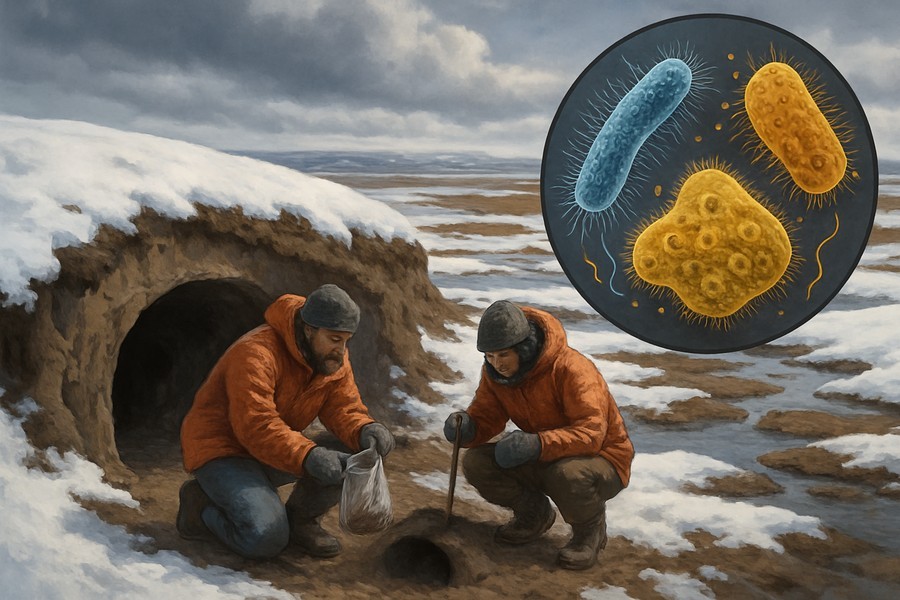
Microscopic Life From Ancient Times Revives After Thawing From the Permafrost
Microscopic life forms, dormant for 40,000 years, are waking up from deep inside a military tunnel drilled into the Alaskan permafrost. Far from being lifeless, these tiny organisms are more than capable of thriving, breaking down organic matter, and releasing it as carbon dioxide.
Why Are Scientists Awakening These Microbes?
Scientists aren't reanimating these ancient microbes for fun. They're doing it to study the impact of global warming, caused by our reliance on fossil fuels, on the Arctic permafrost. This frozen mix of soil, ice, and rocks covers almost one-fourth of the northern hemisphere's land. As the world gets warmer, the permafrost is melting, releasing trapped greenhouse gases.
The Consequences of Thawing Permafrost
As the permafrost thaws, countless microscopic life forms, like the ones in the scientists' samples, wake up from their long slumber. Hungry for food, they start consuming the decaying matter around them, releasing even more methane and carbon dioxide into the air. This adds to the already escalating problem of climate change.
"The impact of the permafrost melting on the ecology of these regions and the acceleration of climate change is one of the largest unknowns we're facing," said a geomicrobiologist studying this phenomenon.
How the Study Was Conducted
The scientists collected samples from a unique Permafrost Tunnel Research Facility, operated by the US Army Corps of Engineers. This facility goes more than 100 meters (around 350 feet) underground.
Back in their lab, they kept the tiny life forms at temperatures replicating an Alaskan summer affected by climate change. The conditions were kept at a cool 39°F and 54°F (3.8°C and 12.2°C). Initially, the microbes grew slowly, with some strains replacing just one in every 100,000 cells daily. In a lab, bacterial strains usually replace their entire colonies within hours.
The Microbes Wake Up After a While
However, after six months, the permafrost microbes sprung into action, as if finally deciding to get out of their frozen slumber. This shows that there could be a delay after the permafrost melts before the microbes start significantly releasing greenhouse gases. It also shows that longer and warmer Arctic summers increase the risk of a dangerous cycle of emissions between humans and microbes.
"A single hot day in the Alaskan summer may not make much of a difference. But when these warm temperatures extend into the autumn and spring, lengthening the summer season, that's when it becomes a problem," explained one of the scientists.
The Implications of the Findings
The study's findings are crucial for predicting how microbes and permafrost will impact a warming Arctic, "especially as the thaw progresses into deeper and more ancient permafrost layers," the scientists concluded.
